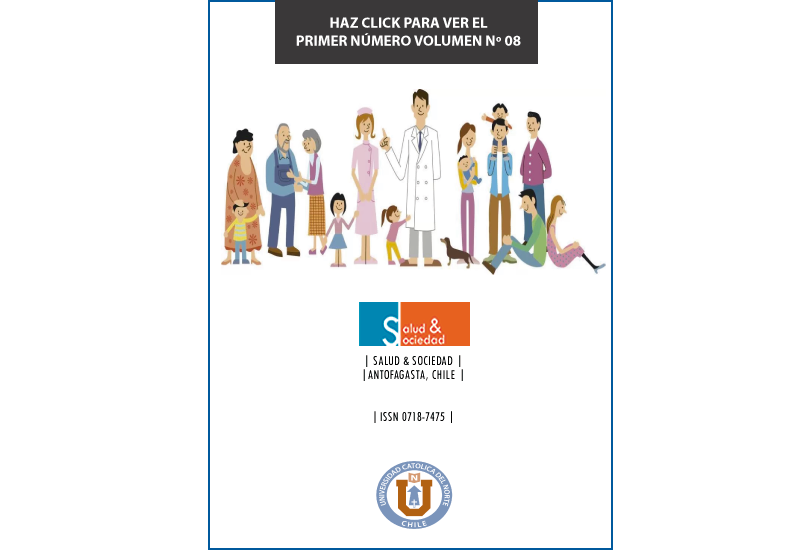Modelos de diagnóstico cognitivo:
fundamentos, didáctica y aplicaciones en ciencias del comportamiento
DOI:
https://doi.org/10.22199/S07187475.2017.0001.00005Palabras clave:
Modelos de diagnóstico cognitivo, Matriz Q, Psicometría, Clasificación, Variables latentesResumen
Los modelos de diagnóstico cognitivo representan una alternativa multidimensional en psicometría cuando se asume que las variables observables y latentes son categóricas. El presente artículo hace una revisión de la literatura sobre los modelos originales, así como aplicaciones y avances recientes en investigación psicométrica en este tema. Además, se incluye una revisión de software estadístico utilizado para la estimación de los modelos y ejemplos de su aplicación en ciencias del comportamiento y de la salud. Ejemplos didácticos con datos simulados demuestran la capacidad de los modelos para clasificar a las personas de acuerdo a sus atributos latentes.
Citas
Chiu, C. Y., & Douglas, J. (2013). A nonparametric approach to cognitive diagnosis by proximity to ideal response patterns. Journal of Classification, 30(2), 225-250.
Chiu, C., Douglas J., & Li, X. (2009). Cluster analysis for cognitive diagnosis: Theory and applications. Psychometrika, 74(4), 633-665.
Chiu, C.-Y., Köhn, H.-F., & Wu, H.-M. (en prensa). Fitting the Reduced RUM with Mplus: A Tutorial. International Journal of Testing.
Culpepper, S. A. (2015). Bayesian Estimation of the DINA Model with Gibbs Sampling. Journal of Educational and Behavioral Statistics, 40(5), 454-476.
de La Torre, J. (2008). An Empirically Based Method of Q-Matrix Validation for the DINA Model: Development and Applications. Journal of Educational Measurement, 45(4), 343-362.
de la Torre, J. (2009). DINA model and parameter estimation: A didactic. Journal of Educational and Behavioral Statistics, 34(1), 115-130.
de la Torre, J. (2011). The generalized DINA model framework. Psychometrika, 76(2), 179-199.
de la Torre, J., & Chiu, C.Y. (2015). A General Method of Empirical Q-Matrix Validation. Psychometrika, 81(2), 253-273.
de la Torre, J., & Douglas, J. A. (2004). Higher-order latent trait models for cognitive diagnosis. Psychometrika, 69(3), 333-353.
de la Torre, J., & Lee, Y. S. (2013). Evaluating the Wald Test for Item-Level Comparison of Saturated and Reduced Models in Cognitive Diagnosis. Journal of Educational Measurement, 50(4), 355-373.
de la Torre, J., van der Ark, L. A., & Rossi, G. (2015). Analysis of clinical data from cognitive diagnosis modeling framework. Measurement and Evaluation in Counseling and Development. Publicación en línea. DOI:10.1177/0748175615569110
DeCarlo, L. T. (2011). On the analysis of fraction subtraction data: The DINA model, classification, latent class sizes, and the Q-matrix. Applied Psychological Measurement, 35(1), 8-26.
DeCarlo, L. T. (2012). Recognizing Uncertainty in the Q-Matrix via a Bayesian Extension of the DINA Model. Applied Psychological Measurement, 36(6), 447-468.
Dempster, A.P., Laird, N.M., & Rubin, D.B. (1977). Maximum Likelihood from Incomplete Data via the EM Algorithm. Journal of the Royal Statistical Society, 39(1), 1–38.
Gelman, A., Carlin, J. B., Stern, H. S., Dunson, D. B., Vehtari, A., & Rubin, D. B. (2013). Bayesian data analysis. Boca Raton, FL: CRC press.
Geman, S., & Geman, D. (1984). Stochastic relaxation, Gibbs distributions, and the Bayesian restoration of images. IEEE Transactions on Pattern Analysis and Machine Intelligence, 6, 721-741.
Gill, J. (2007). Bayesian methods: A social and behavioral sciences approach. Boca Raton, FL: CRC press.
Junker, B. W., & Sijtsma, K. (2001). Cognitive assessment models with few assumptions, and connections with nonparametric item response theory. Applied Psychological Measurement, 25(3), 258–272.
Köhn, H.-F., & Chiu, C.-Y. (2016). A proof of the duality of the DINA model and the DINO model. Journal of Classification, 33, 171-184.
Kuo, B. C., Pai, H. S., & de la Torre, J. (2016). Modified Cognitive Diagnostic Index and Modified Attribute-Level Discrimination Index for Test Construction. Applied Psychological Measurement, 40(5), 315-330.
Hartz, S. M. (2002). A Bayesian framework for the unified model for assessing cognitive abilities: Blending theory with practicality. Unpublished doctoral dissertation, University of Illinois at Urbana-Champaign, UrbanaChampaign, IL.
Henson, R. A., Templin, J. L., & Willse, J. T. (2009). Defining a family of cognitive diagnosis models using log-linear models with latent variables. Psychometrika, 74(2), 191-210.
Henson, R., Roussos, L., Douglas, J., & He, X. (2008). Cognitive diagnostic attribute-level discrimination indices. Applied Psychological Measurement, 32(4), 275-288.
Huang, H.Y. & Wang, W.C. (2014). The Random-Effect DINA Model. Journal of Educational Measurement, 51(1), 75–97.
Huo, Y., & de la Torre, J. (2014). Estimating a Cognitive Diagnostic Model for Multiple Strategies via the EM Algorithm. Applied Psychological Measurement, 38(6), 464-485.
Lee, Y. S., de la Torre, J., & Park, Y. S. (2012). Relationships between cognitive diagnosis, CTT, and IRT indices: an empirical investigation. Asia Pacific Education Review, 13(2), 333-345.
Lee, Y.-S., Park, Y. S., & Taylan, D. (2011). A cognitive diagnostic modeling of attribute mastery in Massachusetts, Minnesota, and the U.S. national sample using the TIMSS 2007. International Journal of Testing, 11, 144-177.
Leighton, J. P., Gierl, M. J., & Hunka, S. M. (2004). The attribute hierarchy method for cognitive assessment: A variation on Tatsuoka’s rule-space approach. Journal of Educational Measurement, 41(3), 205-237.
Liu, J., Xu, G., & Ying, Z. (2012). Datadriven learning of Q-matrix. Applied Psychological Measurement, 36, 548–564.
Maris, E. (1999). Estimating multiple classification latent class models. Psychometrika, 64(2), 187–212.
McLachlan, G. J., & Krishnan, T. (1996). The EM algorithm and extensions. New York, NY: Wiley.
Messick, S. (1989). Validity. In R. L. Linn (Ed.), Educational measurement (pp.13-103). Old Tappan, NJ: Macmillan.
Muthén, L. K., & Muthén, B. O. (2012). Mplus statistical modeling software: Release 7.0. Los Angeles, CA: Muthén & Muthén.
Park, Y. S., & Lee, Y.-S. (2014). An Extension of the DINA model using covariates: Examining factors affecting response probability and latent classification. Applied Psychological Measurement, 38(5), 376-390.
R Core Team (2012). R: A language and environment for statistical computing. R Foundation for Statistical Computing, Vienna, Austria. URL http://www.Rproject.org
Rizzo, M. L. (2008). Statistical Computing with R. Boca Raton, FL: Chapman & Hall/CRC.
Robitzsch, A., Kiefer, T., George, A.C., & Ünlü, A. (2014). CDM: Cognitive Diagnosis Modeling. R package version 2.7-7. http://CRAN.Rproject.org/package=CDM
Rupp, A. A. (2007). The answer is in the question: A guide for describing and investigating the conceptual foundations and statistical properties of cognitive psychometric models. International Journal of Testing, 7, 95–125.
Rupp, A. A., & Templin, J. L. (2008). Unique characteristics of diagnostic classification models: A comprehensive review of the current state-of-the-art. Measurement, 6(4), 219-262.
Rupp, A. A., Templin, J., & Henson, R. A. (2010). Diagnostic assessment: Theory, methods, and applications. New York, NY: Guilford.
Tatsuoka, K. K. (1990). Toward an integration of item-response theory and cognitive error diagnosis. In N. Frederiksen, R. Glaser, A. Lesgold, & M. Shafto (Eds.), Diagnostic monitoring of skill and knowledge acquisition (pp. 453-488). Hillsdale, NJ: Erlbaum.
Templin, J. L., & Henson, R. A. (2006). Measurement of psychological disorders using cognitive diagnosis models. Psychological methods, 11(3), 287-305.
Templin, J., & Hoffman, L. (2013). Obtaining diagnostic classification model estimates using Mplus. Educational Measurement: Issues and Practice, 32(2), 37-50.
Thomas, A., O’Hara, B., Ligges, U., & Sturtz, S. (2006). Making BUGS open. R news, 6(1), 12-17.
van der Linden, W.J., & Glas, C.A.W. (2000). Computerized adaptive testing: theory and practice. Dordrecht: Kluwer Academic Publishers.
Vermunt, J. K., & Magidson, J. (2005). Technical guide for Latent Gold 4.0: Basic and advanced. Belmont, MA: Statistical Innovations Inc.
von Davier, M. (2005). A general diagnostic model applied to language testing data (ETS Research Report RR-05- 16). Princeton, NJ: Educational Testing Service.
von Davier, M. (2008). The mixture general diagnostic model. In. G. R. Hancock & K. M. Samuelsen (Eds.), Advances in latent variable mixture models (pp. 255-274). Charlotte, NC: Information Age Publishing.
von Davier, M. (2009). Some notes on the reinvention of latent structure models as diagnostic classification models. Measurement, 7(1), 67-74.
von Davier, M. (2010). Hierarchical mixtures of diagnostic models. Psychological Test and Assessment Modeling, 52(1), 8-28.
von Davier, M. (2014). The DINA model as a constrained general diagnostic model: Two variants of a model equivalency. British Journal of Mathematical and Statistical Psychology, 67(1), 49-71.
Xin, T., & Zhang, J. (2015). Local Equating of Cognitively Diagnostic Modeled Observed Scores. Applied Psychological Measurement, 39(1), 44-61.
Xu, X., & Davier, M. (2008). Fitting the structured general diagnostic model to NAEP data. (ETS Research Rep. No. RR-08-27). Princeton, NJ: ETS.
Xu, G., & Zhang, S. (2016). Identifiability of Diagnostic Classification Models. Psychometrika, 81(3), 625–649.
Publicado
Cómo citar
Número
Sección
Los autores continúan como propietarios de sus trabajos, y pueden volver a publicar sus artículos en otro medio sin tener que solicitar autorización, siempre y cuando indiquen que el trabajo fue publicado originariamente en Revista Salud & Sociedad (ISSNe:0718-7475).



_(1).png)





